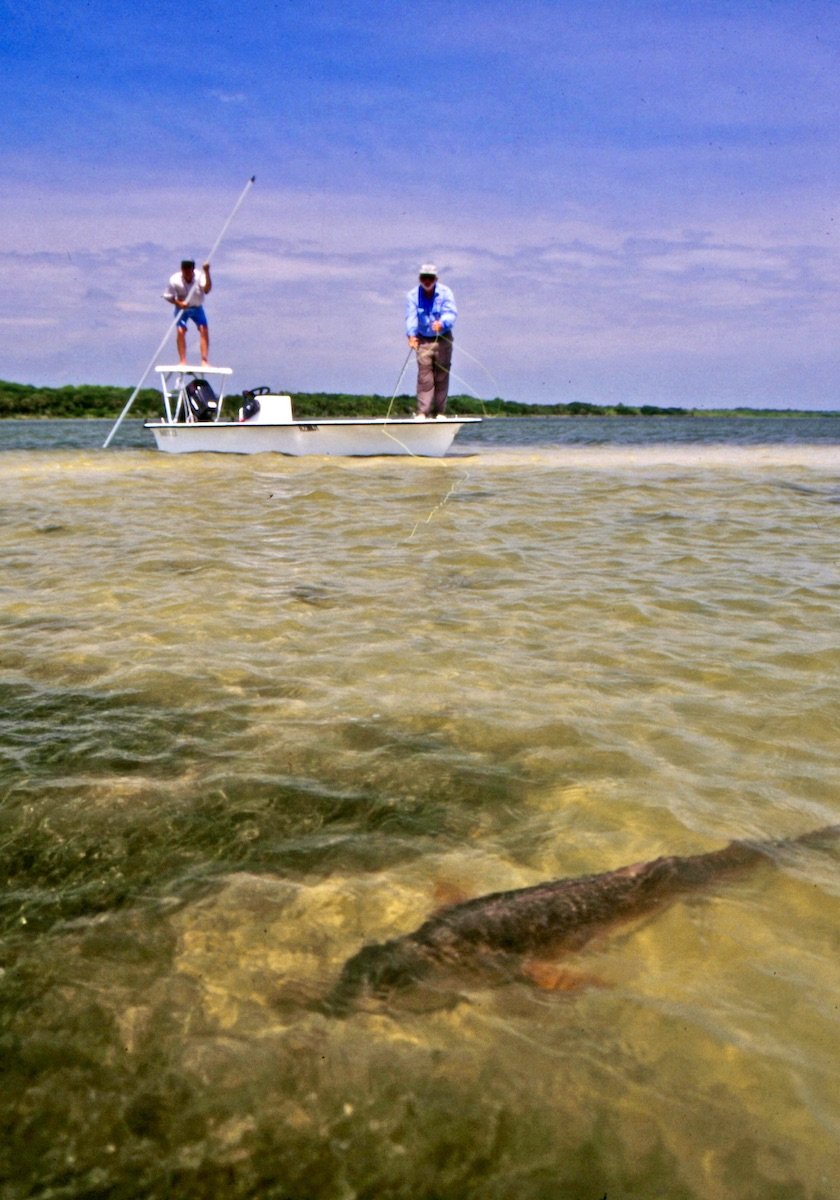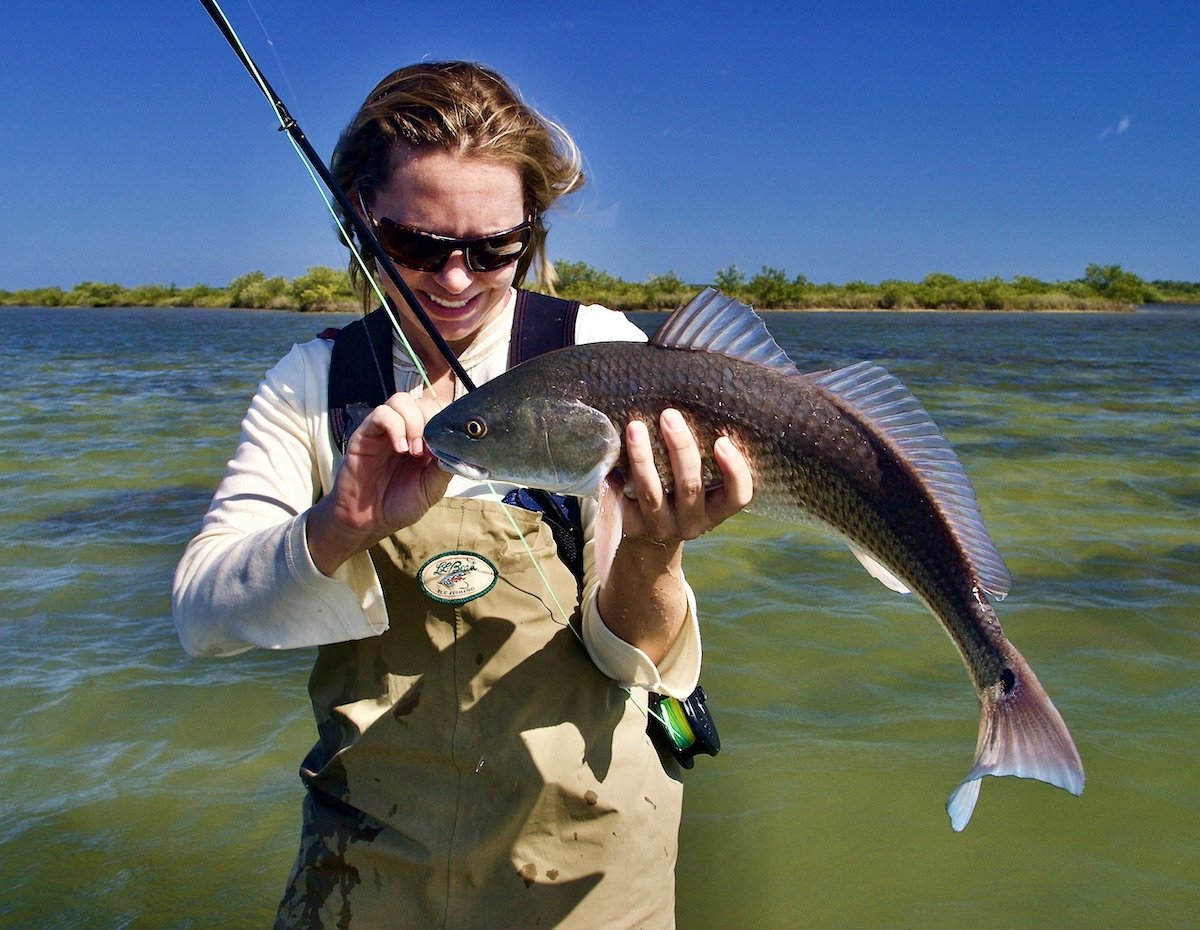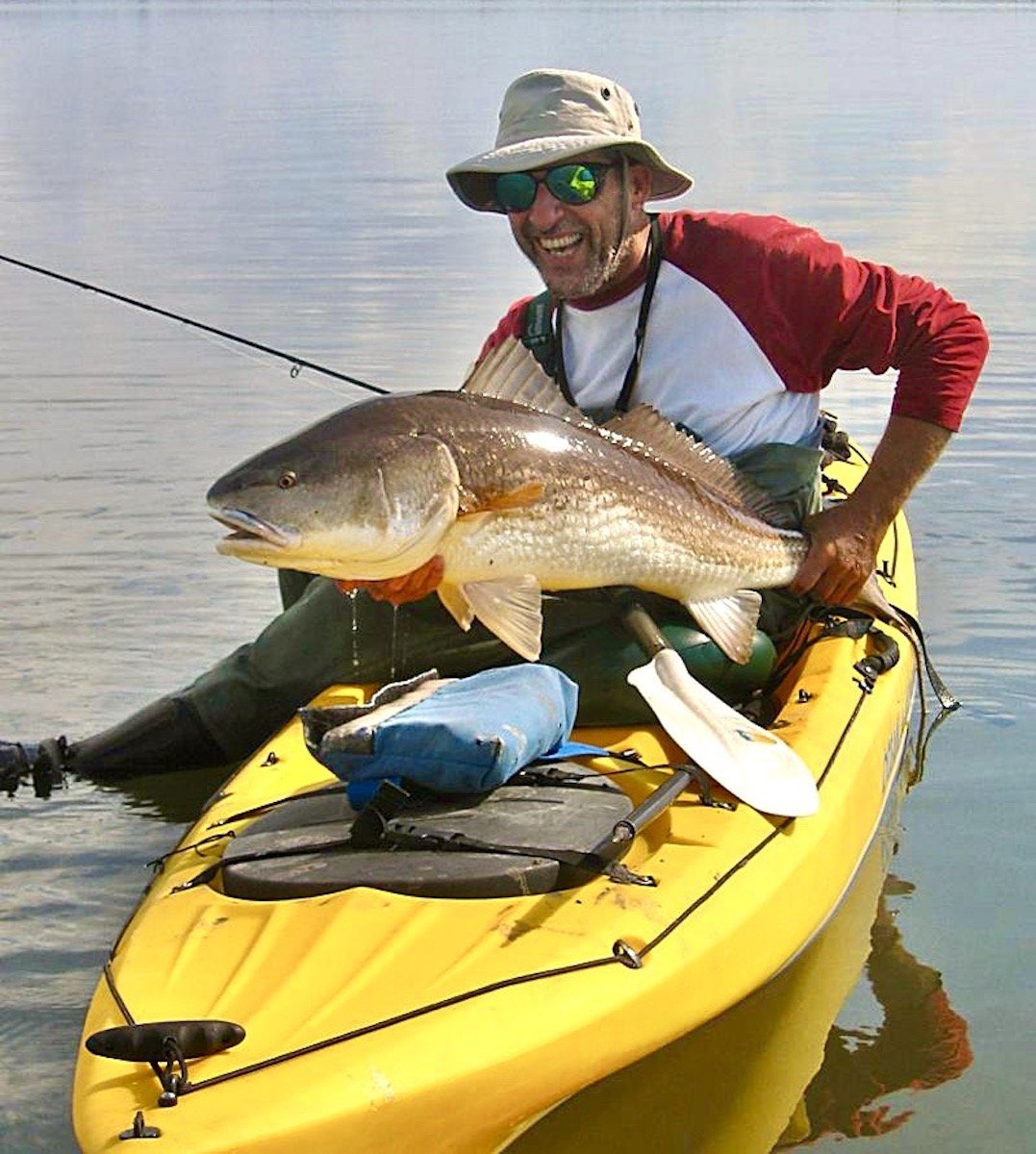Choosing Fly Tackle for Redfish
By: John Kumiski
Conventional wisdom says, “Use an eight-weight outfit for saltwater, including redfish.” Back when I was guiding, when I got calls about redfish charters from people who I didn’t know, and they asked me about tackle, that’s what I told them. Eight-weight rod, matching reel, floating weight forward line with at least 100 yards of backing, or reasonable facsimile. Worked for most guys.
Three decades ago (where does the time go?) I fished in Louisiana with Capt. Danny Ayo. Danny was using a two-weight Sage to fish in the Louisiana marshes for redfish, black drum, and whatever else he encountered. Mind you, in those marshes the reds typically ran from five to eight pounds or so, but he did get larger ones in there. The biggest one we got that weekend was 11 pounds. It was a very eye-opening experience for me, and I immediately started downsizing my own tackle when I got home.
A few years passed, and I got a call about a redfish charter from a gentleman who I didn’t know. He was grilling me particularly hard on the topic of rod size, especially when I gave him my standard answer to the question. I finally asked him, “Look, what do you want to do?” He replied, “I’m a trout guide in California, and I want to use my four-weight.” “How well do you cast?” I asked. “Top five percent,” was his reply. “Well, you shouldn’t have any trouble with it then.”
When he showed up to fish with me, he was every bit the caster that he said he was. His first fish on his four-weight weighed 12 pounds, and we had a heck of a day.
A rod-maker once gave me a five-weight rod with the instructions that I was to try to catch a 20 pound redfish with it, and try to break it. He wanted to know how much the rod could take. I dutifully went out and caught a 20-plus pound red with it, and reported same to him. His response was, “Now get a bigger one.” I went out and got one in the 30 pound range. The rod still didn’t break; on the contrary, it performed beautifully.
Your tackle is right if it consistently get the fly in front of the fish.
The moral of these tales is that while the “standard” eight-weight outfit will of course work, if you’re a good caster, you don’t need such a big rod to catch redfish. Your average red runs between four and ten pounds, and it doesn’t take an eight-weight to subdue one. During my winter kayak redfishing, I usually use either a three-weight or a four-weight, depending on the weather forecast.
You may need the eight-weight to throw large, heavy, or wind-resistant flies, or to cast in a 15 knot wind. It depends on your fishing situation. But if you cast well, using lighter tackle will force you to become a better caster, will increase your angling enjoyment, and will make you a more competent angler.
Rods
Modern fly rods do a wonderful job, and there are a wide variety of actions and prices out there. Most work very well. The late Lefty Kreh put it best: “Most rods cast better than the people using them.”
The fish don’t care what kind of rod you use. As long as the rod puts the fly in front of the fish where it belongs, they’ll respond.
Rods DO have a wide variety of actions. While giving a seminar to a fly fishing club one time, I had everyone there string up their rods for casting. We were on a large, grassy area, and I had everyone line up and cast. Everyone cast their own outfit for a few minutes. Then we all put our outfit down on the grass and shifted over one rod, and cast the next guy’s outfit for a few minutes. Then we did the same again, and again, until everyone had cast every outfit that was there. The difference between all those different outfits was nothing short of astonishing, and I have no doubt that several outfits were traded, sold, or purchased as a result of that exercise.
Women and children find smaller tackle easier to use.
The moral of this story is that before you plunk down your cash for a rod, you need to try it, preferably with a couple of different line tapers and weights. Recommendations from friends are fairly meaningless, since what works for them won’t necessarily work for you. Try before you buy!
Lines
Most redfishing happens on the flats. For flats fishing you need a floating, weight-forward line. There are lots of different tapers out there, but your standard weight forward taper works just fine. Sink-tips don’t work well, nor do intermediates. They just make the fly foul on the bottom.
Although I know some fine anglers disagree with me on this, I recommended that you overline your rod by one weight. Because the heavier line loads the rod faster, it makes quick work of a short cast! However, you should do whatever works best for you.
Most, but not all, redfishing happens on the flats. What if you want to fish in the surf? Then a floating line is a handicap. It floats on the water and is badly affected by wave action. For surf fishing an intermediate line works best.
What about blind-casting in deeper tidal creeks, or out in open water? Personally I don’t like to do that kind of fishing, and fortunately where I live, I seldom have to. But in that situation, you would need a sink-tip line or even a full sinking line.
Fly lines are tools, used to deliver your fly to the fish. Like any other tools, you need what you need, and nothing else will do. But I don’t think I’ve ever used a sink-tip or full sinking line for redfish.
Buy what you need, and get the other stuff only if the need comes up. A floating line will serve most redfishing needs.
Reels
Your redfish reel needs to hold 100 yards of backing and the fly line. It needs a rudimentary drag system. It has to balance your rod nicely. It has to somewhat resist the ravages of the saltwater environment, although you can help it last longer by rinsing it off with freshwater after use and cleaning and lubing it as needed.
I have some fine reels which, of course, I enjoy using. However, I fish from a kayak a lot, and a kayak beats the heck out of your reel. It sits in muddy water all the time and just gets abused. I previously used a Cortland Crown, a $50 reel, for this work. It lasted almost five years. At the end, it looked like hell, but it’s performance was flawless. And I took some big reds with it.
This beast was subdued with a five-weight. You don't necessarily need an eight-weigh
Again, the point is that you can spend a ton of money on a beautiful reel and have it as a family heirloom, and there’s absolutely nothing wrong with that. Or you can buy an inexpensive one and know it’s going to break and need replacement. You do have that choice, and as long as it holds the backing, has the drag, balances the rod, and resists the salt, you’ll be fine.
Leaders
Danny Ayo used the most simple leader imaginable- a straight, ten foot long piece of 16 pound test monofilament (fluorocarbon hadn’t gotten popular yet when we fished). I’m not recommending that, but I know other great fishermen who take a similar approach. Don’t make things harder than they have to be.
There are a load of different leader options out there. You can buy ready-made leaders, both knotted and knotless. They’re expensive. I don’t trust the knotless ones, because I think they’re too flimsy. But if they work for you, that’s what you should use.
Good tackle choices make scenes like this much more frequent!
You can use the 60-20-20 formula, or some other formula, to make your own tapered leaders. Again, if that works for you, that’s what you should do.
I use a two part leader, based on a big game leader. Half butt section, half tippet. Simple. Not much to break there.
You'll find that where the fish are dumb (in other words, not fished much), you can get by with a seven- or eight-foot leader. Where fish see lots of fishermen, you might need fourteen or fifteen feet.
So we've covered rods, reels, lines, and leaders for redfish. Flies will be covered in a seperate piece. They are a whole different can of worms!
Have you done something interesting outdoors? Join Global Outdoors and write a review to tell everyone about it! We’re building the home for trusted reviews of outdoor experiences, outfitters, and guides






